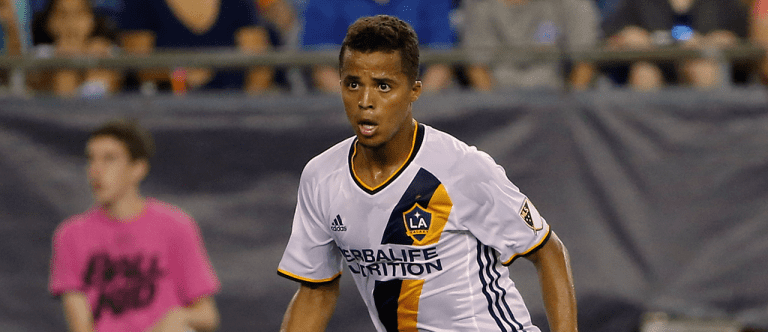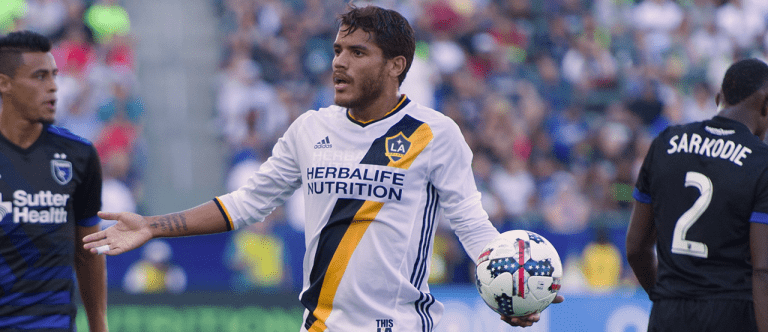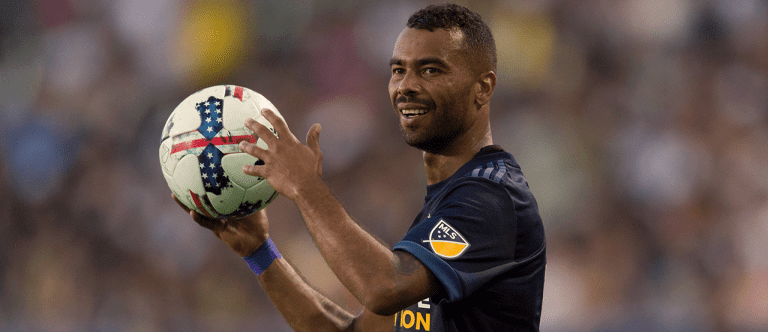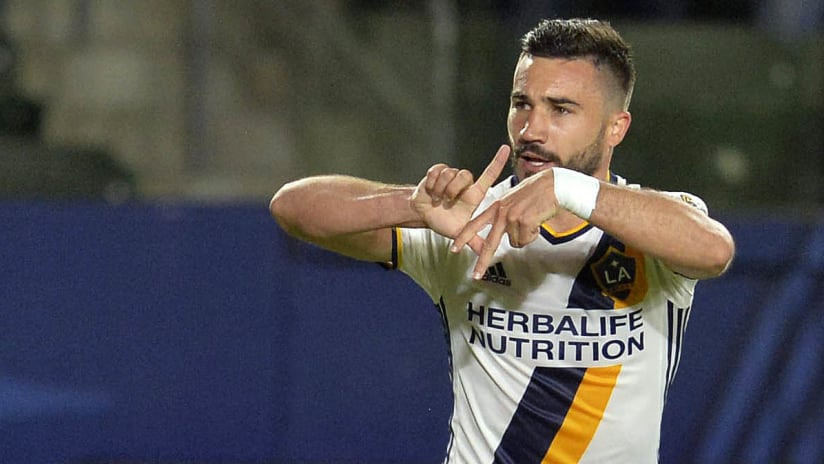It’s strange to say, but the LA Galaxy had been flying under the radar coming into this offseason. LAFC’s arrival has taken much of the LA spotlight, and Atlanta has stolen the major acquisition headlines. Plus, their last place 2017 form made it tough to imagine Major League Soccer’s most successful club regaining their Galacticos form anytime soon.
But you should always be careful to sleep on the beast.
Over the offseason, the Galaxy added Perry Kitchen and Chris Pontius, traded for Ola Kamara and David Bingham, signed two full internationals to their defense, and regained a healthy Sebastian Lletget. They join high-paid stars Giovani dos Santos, Jonathan dos Santos and Romain Alessandrini, as well as steady contributors Ema Boateng and Ashley Cole. Matt Doyle has them at No. 7 in his early 2018 Power Rankings, and in my opinion it’s a conservative estimate. The Galaxy have reloaded and look ready to compete for titles again.
Here’s a look at how we could expect the Galaxy to play.
Attack

Giovani dos Santos returns for his fourth season in SoCal. | USA Today Images
It’s always tough to say how a Sigi Schmid team will play. Sigi has always been flexible with both his stylistic and tactical selections. He adjusts the system to fit the players at his disposal. For example, his MLS Cup-winning Columbus Crew SC team deployed an attacking playmaker, Guillermo Barros Schelotto, behind an industrious striker, Alejandro Moreno, whereas his best Sounders teams played a pretty simple 4-4-2 with Clint Dempsey and Obafemi Martins paired up top. Based on the players on the Galaxy roster, Schmid will most likely go with three attackers behind a lone forward.
Kamara will start up top, and then behind him it will likely be Lletget, Gio dos Santos and Alessandrini. Lletget will start on the right, GDS in the middle, and Alessandrini on the left, but it won’t stay like that for long; it’ll manifest as the pure form of the attacking segment of a 4-2-3-1. Whereas some 4-2-3-1 formations have a basic attacking midfielder in the middle and wingers wide, which I would argue is just a 4-3-3 misinterpreted by people who wanted to fall in line when the 4-2-3-1 became trendy, the Galaxy could and should have a totally fluid three attacking midfielders. Lletget, GDS and Alessandrini all have the ability to play in any of the three attacking spots, and none of them like getting stuck in one spot. They should each rotate frequently and pop up in each and any part of the field.
The rotation should happen naturally in the run of play. Whereas some teams have to plan their positional switches, the Galaxy attackers will interchange automatically due to their similar styles in possession. None of those front four like to put their head down and run at a defender. They all prefer to find passing combinations. Specifically, they are excellent at moving immediately after the pass leaves their foot, with a specific emphasis on following their pass in the same direction they send the ball. Since they want to play the same type of soccer, they know how to move and work with each other.
Some analysts or coaches would argue it’s dangerous to have so an entire attack of similar players. It’s a common thought that it’s better to have a variety amongst your arsenal. I disagree. Perhaps it’s nice to have players who can do a spectrum of skills, but ultimately you want players who see the game the same way. It creates a cohesive unit that gets the best out of each player. It doesn’t help to have a 1v1 specialist on the wing if the striker and attacking midfielder prefer to check for a ball to feet than get in the box and make runs at all.
Midfield

Jonathan dos Santos will get a full preseason under his belt after joining the Galaxy last summer. | USA Today Images
Whereas Sigi has always been open to attacking formations, he’s shown more consistency with his preference in the engine room. He generally lines up with a disciplined defensive midfielder behind a more energetic shuttler. Think Brian Carroll behind Brad Evans in Columbus and Ozzie Alonso behind Evans or Cristian Roldan in Seattle. He has a similar option with Kitchen and Jonathan dos Santos.
Kitchen isn’t the most athletic or skillful midfielder, but he’s incredibly tidy and disciplined. If a coach tells him to protect the center backs, the coach can trust he will protect the center backs. Offensively, he will mostly be asked to keep the game simple and connect his passes to get his team into possession.
In front of him, dos Santos will get more freedom to find the game. While Kitchen sits, Jonathan will cover more ground and act as another option to the attacking unit. Like Kitchen, he will generally keep it simple in possession. With the level of talent in the attacking third, the midfield will be tasked with starting possession and building flow rather than providing cutting passes.
An interesting wrinkle to the options is Lletget. I’m not sure Lletget’s best position isn’t center mid. He’s incredibly brave in possession – a rare trait among MLS center mids – always willing to take the ball in tough spots with players around him. He also has an incredible engine and a knack for getting around the ball and being involved in the game. If either Kitchen or dos Santos don’t perform, or Sigi wants a different look from his front four, Lletget could step into the midfield and Pontius or Boateng could take his spot in the attack.
Again, the Galaxy should feel good about its midfield options.
Defense

Ashley Cole will provide veteran know-how on | USA Today Images
There’s always another side to the coin, and for the Galaxy, it’s the defense.
As is true with most high-budget, high-powered teams, the defending phase of the game is a big question mark. David Bingham, acquired via trade from San Jose, will start in goal. He had an impressive start to his career, but struggled in 2017 before being benched. In front of him, Bingham is likely to see three unknown MLS commodities. Rolf Feltscher, a Venezuelan international signed from Cardiff City, seems probable to start at right back. Michael Ciani, who played six games for the Galaxy in 2017 after signing in September, and Jorgen Skjelvik, signed from Norwegian champions Rosenborg BK, are the frontrunners to start at center back. Cole, who was re-signed this offseason, seems unlikely to get unseated at left back. And while all four players have impressive resumes, it’s always difficult to predict how player will adapt to a new league.
More than the personnel, though, the Galaxy might have issues with how they decide to defend. I’ve already touted the exciting possibilities for the attack, but the downside to a fluid attacking approach is that it opens them up to counterattacks and players find themselves out of position when it comes time to defend.
Sigi has often opted for a simple middle block in the defending phase, but it might not align with their attacking set up. Is it possible to play a middle block and also allow three attacking midfielders total creative freedom? Can players switch their brain from expressive to disciplined in a matter of seconds? It might be best for the Galaxy to try to spend less time in defensive blocks and more time harassing the opponent in transition moments.
However Schmid and his staff opt to play, the biggest point of emphasis for their success could be the presence of Kitchen. Kitchen will provide stability to an otherwise unpredictable squad. Every backline looks better with a disciplined anchor protecting the space right in front of them.
Ultimately, the Galaxy definitely have questions defensively, but they may also have the firepower in the attack to make up for it. The Galaxy attack has a rare combination of elite talent and also synchronicity in skillset.
If Sigi can keep the team focused and cohesive – two tasks that are inherently tough with a talented and deep squad – the Galaxy will be in the mix for trophies.












